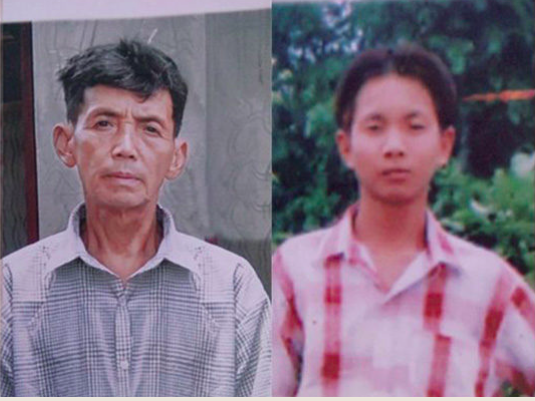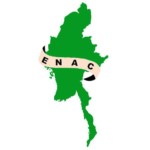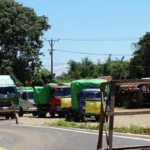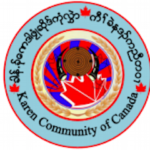Lawi Weng / The Irrawaddy | August 13, 2018
MON STATE — The Myanmar Army (or Tatmadaw) said two Kachin men shot dead by government soldiers in January were Kachin Independence Army personnel killed in battle, contradicting claims by local civilians that they were IDPs who were arrested, tortured and executed.
The two men, Hpaugan Yaw, 65, and Nhkum Naw San, 35, were residents of Maing Hkawng IDP camp in Mansi Township. They were killed on Jan. 31 while attempting to return to their village to check on their animals, according to other IDPs.
Their bodies were found in March when local residents defied a Tatmadaw order and went to search for the missing pair.
The Ministry of Defense said yesterday that based on evidence obtained from local authorities in Maing Hkawng who examined the bodies, and testimony from locals, the Army had concluded in a report that the two IDPs were killed in battle and were members of the KIA.
That report states that according to local authorities, U Nhkum Naw San’s skull was shattered by a powerful gunshot to the head, and U Hpaugan Yaw was also shot in the head. His skull contained an exit wound, it said.
Therefore, the Army concluded in its report that the two were killed in battle. The implication of the Army’s report appears to be that, as there were reportedly no other wounds other than the fatal gunshots on their bodies, the two were not tortured.
The Tatmadaw also said it had asked a laboratory in Yangon and police in Napyitaw to test the dead men’s clothing for traces of blood and gunpowder. The lab found blood but no powder residue, according to the Army.
“The fact that the lab did not find gunpowder residue on their clothing shows that the two men were not shot at close range,” the Army said in its report.
According to the Tatmadaw, experts concluded that the two were clearly shot and killed during combat against the Army.
It added that an Army investigation team from Naypyitaw traveled to Maing Hkawng in the second week of July to gather testimony. They spent six days collecting testimony from 39 people including relatives of the victims, township authorities and Myanmar Army personnel.
The team allowed witnesses to record their statements in their own handwriting, and had them sign it. Those who could not write were able to submit recorded voice statements, according to the report.
The Tatmadaw added that some people had spread lies that the Army coerced the testimony.
The Myanmar Army also released photos of bullets, a phone and two KIA uniforms, which it said belonged to the two deceased men.
However, a member of the Kachin Baptist Convention who participated in the retrieval of the bodies said the Tatmadaw’s report contradicts what he saw on the ground.
Speaking to The Irrawaddy on condition of anonymity for reasons of personal security, he recalled seeing many dark colored wounds on the bodies.
Some IDP camp leaders believed that the two IDPs were tortured before they were murdered, he said.
In its report, the Tatmadaw rejected the accusation that its troops murdered the men. It added that police were in the process of withdrawing a murder case against it begun by the victims’ family.
Kaw Awng, a member of the family, filed a lawsuit after the two men disappeared. After the bodies were found, she accused the Army of murder.
The Myanmar Army countersued the woman under the Unlawful Association Act on grounds that her relatives were alleged KIA members, reportedly prompting the woman to go into hiding.
It has been six months since the murder case was first opened. The KBC asked the Myanmar National Human Rights Commission (MNHRC) to investigate possible rights abuses, but the agency limited its investigation to talking with the Myanmar Army, according to some KBC members at Maing Hkwang IDP camp. The commission’s report, issued in June, concluded that the two were members of the KIA and were combat casualties.
Since the bodies were found in March, rights groups have repeatedly asked the Myanmar government to take action against any Army personnel found to have murdered the two IDPs. But their appeals have been met by repeated denials from the Myanmar Army.
David Baulk, a Myanmar specialist with the group Fortify Rights, said “the Myanmar military’s continued denial of any wrongdoing in this case is a depressingly familiar story. The military has once again shown it is more concerned with absolving itself than holding those responsible to account. It is cruelly ironic that the military insists it is the protector of Myanmar’s people while attacking them throughout Kachin State, and denying aid to those whose lives depend on it.
“While the military continues with these brazen denials, ethnic minority communities throughout the country are demanding justice. It’s clear that Myanmar’s authorities have no intention of holding themselves to account for mass human rights violations. The U.N. Security Council needs to step up and refer the situation in Myanmar to the International Criminal Court.”






